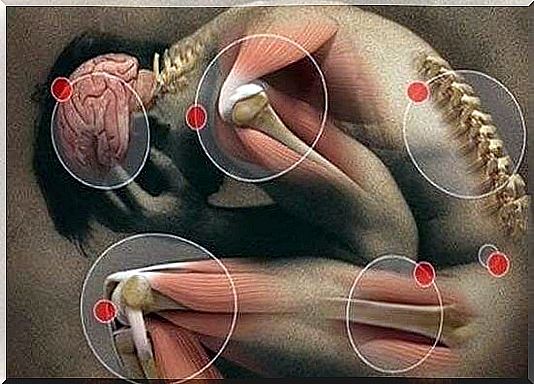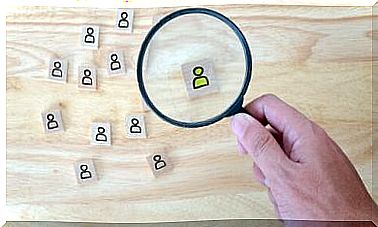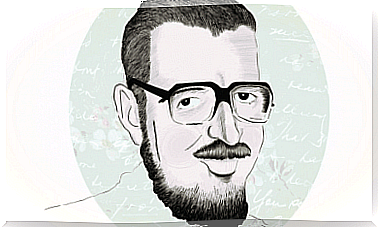My Chronic Illness Is “invisible” Not “imaginary”

We live in a society where chronic illness remains invisible. We speak of realities as harsh as fibromyalgia, which for many is an imaginary disease with which some people justify their absence from work. It is necessary to change mentalities: there is no need for a physical wound for the suffering to be real.
Socially invisible chronic diseases (DCSI) are responsible for, according to the “World Health Organization” (WHO), about 80% of diseases today. We talk, for example, about mental illnesses, cancer, lupus, diabetes, migraines, rheumatism, fibromyalgia … Debilitating diseases for those who suffer from them, and which furthermore force sick people to face a society that is too used to judging without knowing.
Living with a chronic illness is, in turn, taking a journey as slow as it is lonely. The first step of this journey is the search for a definitive diagnosis of “ everything that happens to me ”. It’s not easy. In fact, it can take years for a person to finally name what inhabits their body. Later, after having taken on the disease, the most complex part certainly comes: finding dignity, quality of life with pain as a traveling companion.
If we add social misunderstanding and lack of sensitivity to all this, we will understand why, sometimes, the primary illness is added to depression. On the other hand, don’t forget that most people affected by chronic illnesses are children.
It is a relevant topic in society, which is worth reflecting on.

I have a chronic illness that you can’t see but it’s real
Many people affected by a chronic illness sometimes feel the need to carry a label. A sign with big letters in which they explain what happens, so that the rest will also understand. To better understand this reality, let’s take an example.
Maria is 20 years old and goes to college by car. She parks in the space reserved for the disabled. Later, grab an umbrella to enter her classroom. One fine day, she sees her image shared on social media. People make fun of her because she’s eccentric, because she carries an umbrella. In addition, they insult her because she has the “poor face” of parking in the handicapped area, looking so normal: two legs, two arms, two eyes and a pretty face…
Days later, Maria is forced to talk to her university colleagues: she has lupus. The sun reactivates her illness and, in addition, she carries two prostheses on her hips. Your illness is not visible to the naked eye, but it is there, changing your life, challenging you every day to become stronger, more courageous.
Now… How to live without continually describing your pain, without putting up with each step the faces of skepticism or compassion?

Maria doesn’t want to tell all the time what’s going on. He doesn’t want special treatment, he just wants respect, understanding. Being normal in a world where the different is objectified.
Invisible diseases and the emotional world
The degree of disability of each chronic illness varies from person to person. Some will have greater autonomy, and there will also be those who, in turn, may be more or less functional, depending on the day. In the latter case, the person will have moments in which the disease imprisons him and moments in which, without knowing why, he feels more free from the disease.
There is a non-profit organization called the “Invisible Disabilities Association” (IDA). Its function is to educate and connect the person with an “invisible disease” with their closest environment and with society itself. Something they make very clear in this association is that living with a chronic disease is a problem, even in the family or school environment.

Many adolescent patients, for example, sometimes receive censures from their surroundings because they believe they use their illness to not fulfill their obligations. Your tiredness is not due to laziness. Your pain is not an excuse for not going to school or not doing your chores. Such situations are the ones that, little by little, can end up disconnecting the person from their reality, until they become, if possible, even more invisible.
The importance of being emotionally strong
No one has chosen your migraines, your lupus, your bipolar disorder… Far from surrendering to what life has to offer, there is only one option left. Embracing, fighting, being assertive, getting up each day despite pain or fear.
- A chronic illness involves having to assume many quirks that accompany it. One is to accept that we will be judged at some point. We must prepare ourselves with adequate coping strategies.
- We must not be reluctant to say what happens to us, to define our illness. We have to make the invisible visible so that those around us become aware. There will be days when we can take anything and times when we can’t take anything. However, we remain the same.
- We must also be able to defend our rights. Both in terms of work and in the case of children in schools.
- Neurologists, rheumatologists and psychiatrists recommend something essential: movement. You have to move with life and get up every morning. Although pain makes us captive, we have to remember one thing: if we stop, obscurity, negative emotions and despondency hit us…

In conclusion, one thing that should be clear is that people affected by socially invisible chronic diseases do not need our compassion. Nor should we give them special treatment. The only thing they demand is empathy, consideration, respect… Because sometimes the most intense, wonderful or devastating things, such as love or pain, are invisible to the eyes.
We don’t see them, but they are there.









